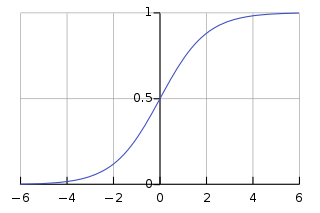Organizational Heartbeat
I am working on a book about agency, and the power and requirements for transformational change. This comes out of about a decade of writing about philanthropy – both for effective donors and the sector as a whole. Today, Eugene Kim posted to Facebook a link to a groupaya post, How Can We Make Nonprofit Consulting Transformational? And this reminded me of Geoffrey West’s TED talk on The surprising math of cities and corporations.
My sense is that the larger the organization, the slower the heartbeat of the organization – AND the less it is capable of transformational change. This is all about efficiencies of scale. And you know from previous posts that I have an allergic reaction to scale as a lauded idea in and of itself. It always, to me, requires clarification. Mostly because people act as if scale operates as a power law – when I think it is a sigmoidal function. Probably because of that West TED talk, of course, since I am not a mathematician by any stretch of the imagination.
West makes clear is that companies grow on a sigmoidal curve – an S curve. You grow on an s curve too. And then you stop growing. These economies of scale are not infinite. At a certain point the energy required to transmit information throughout the organization and engage all the people in it exceeds the effectiveness gained by adding more people to it. [See also what West says about cities not being sigmoidal.]
Let’s be a little more clear about this scaling thing. The Long Now has a lovely essay on West’s work, which I pulled this quote from:
Working with macroecologist James Brown and others, West explored the fact that living systems such as individual organisms show a shocking consistency of scalability. (The theory they elucidated has long been known in biology as Kleiber’s Law.) Animals, for example, range in size over ten orders of magnitude from a shrew to a blue whale. If you plot their metabolic rate against their mass on a log-log graph, you get an absolutely straight line. From mouse to human to elephant, each increase in size requires a proportional increase in energy to maintain it.
But the proportion is not linear. Quadrupling in size does not require a quadrupling in energy use. Only a tripling in energy use is needed. It’s sublinear; the ratio is 3/4 instead of 4/4. Humans enjoy an economy of scale over mice, as elephants do over us.
With each increase in animal size there is a slowing of the pace of life. A shrew’s heart beats 1,000 times a minute, a human’s 70 times, and an elephant heart beats only 28 times a minute. The lifespans are proportional; shrew life is intense but brief, elephant life long and contemplative. Each animal, independent of size, gets about a billion heartbeats per life.
Picture a mouse trying to do a startup pivot. Now try to imagine your favorite large scale organizational gorilla trying to pivot. The larger the company, the more difficult it is to turn the entire company on a single point and do something related but quite different.
Startups often go through multiple transformations of what they do, how they do it, and who they do it for. Their organizational heartbeat is fast and their scale is small. (And some of them get successfully gobbled up by the larger organizational bodies, but we can talk about that another day.)
You can have nonprofits, whose social mission talks about transformational change, hiring consultants to help them do that as much as you want, but they won’t be very good at it. The kind of organizational heartbeat needed for transformational change – that leading edge early adopter game changing innovation in the social sector – well, it isn’t going to happen in the large organization. (We could talk about how big donors impede that, how organizational mission moves from “change” to “keeping the org alive” or how larger orgs attract stable-present-focused people who aren’t keen on transformational disruption, etc… but understanding the why doesn’t change that it happens. And we ought to just be honest about it and stop speaking transformational change in organizations that don’t do it.)
Do you think organizational scale relates to ability to be transformational? Or not? If not, why not?
ps. the antidote or innovation that can disrupt this exists – organizational slime molds… crowdfunding transformational change experiments, etc. I don’t have clear answers on how that all works, but I am deeply curious about how it is connecting.




